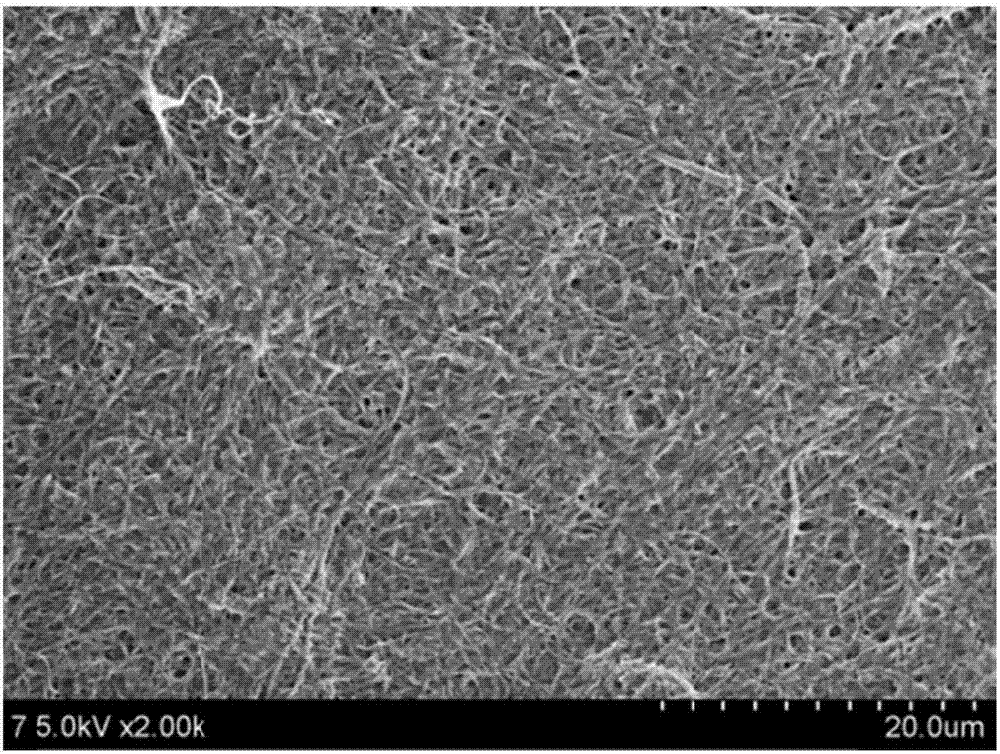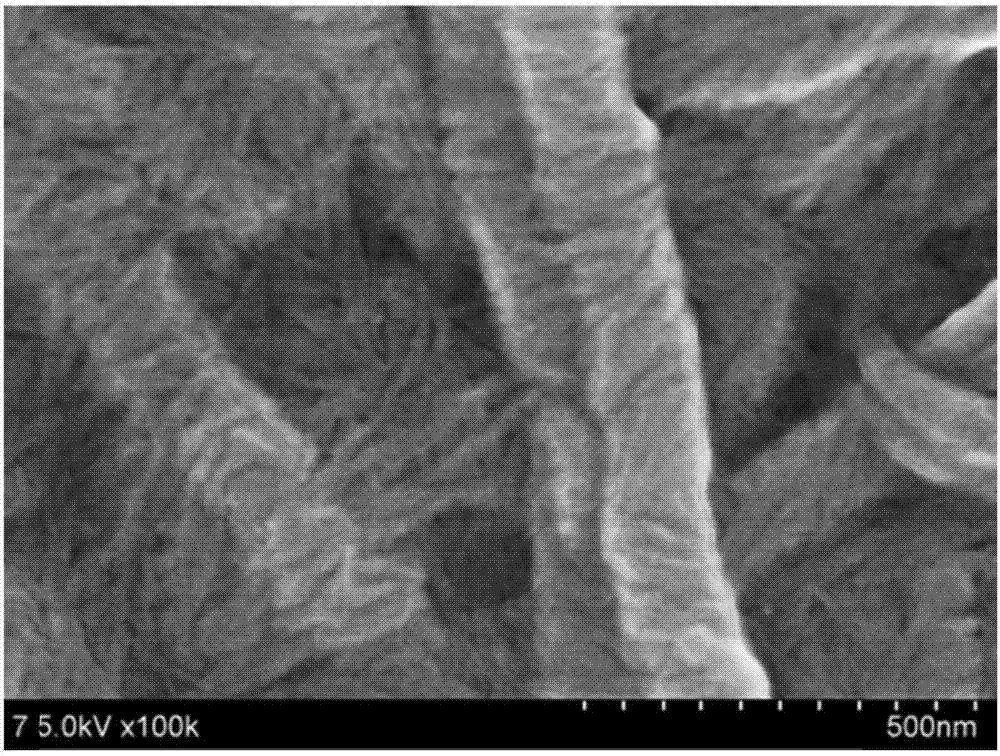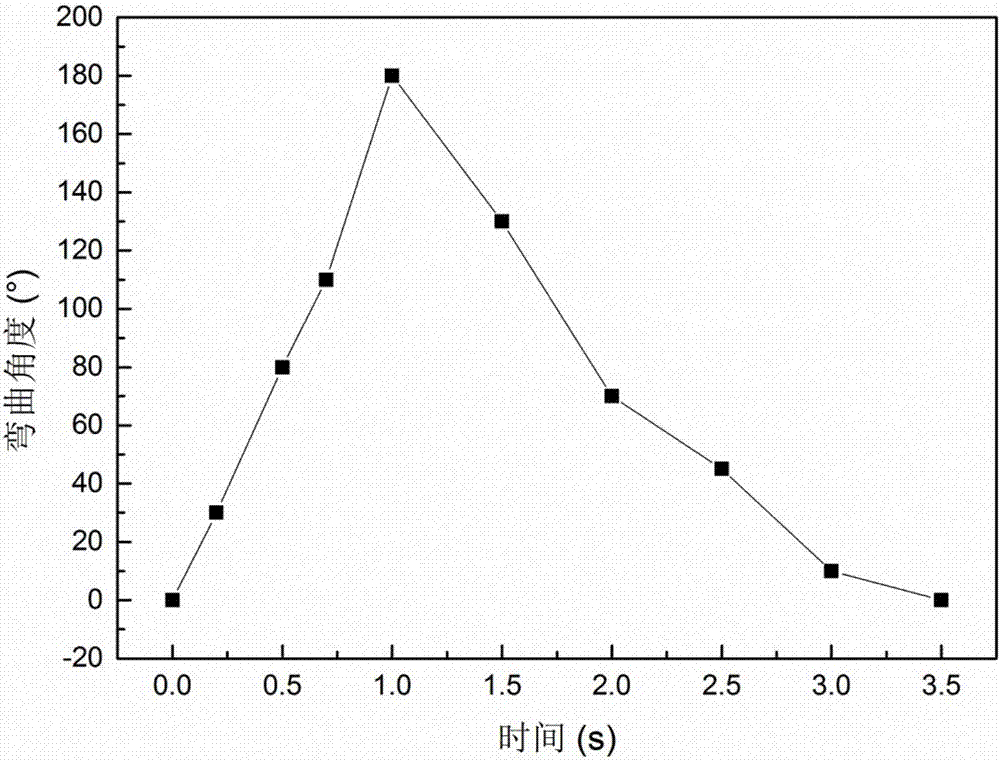Nanocrystalline cellulose nano-fiber composite membrane sensitive to humidity and preparing method thereof
A technology of nanofibers and nanocrystals, applied in textiles, papermaking, nonwovens, etc., can solve problems affecting the degree of industrialization, expensive raw materials, cumbersome preparation steps, etc., and achieve environmental protection of humidity-responsive materials, rapid recovery speed, and production The effect of simple process
- Summary
- Abstract
- Description
- Claims
- Application Information
AI Technical Summary
Problems solved by technology
Method used
Image
Examples
Embodiment 1
[0031] A method for preparing a humidity-sensitive nano-microcrystalline cellulose nanofiber composite film, specifically comprising the following steps:
[0032] 1) Preparation of nanocrystalline cellulose suspension: cotton is added to 60wt% sulfuric acid solution to carry out acid hydrolysis reaction on cotton, the mass ratio of cotton to acid solution is 1:8, the temperature of acid hydrolysis reaction is 45 ℃, time After the reaction is completed, the reaction solution is centrifuged and washed with pure water, then dialyzed with pure water until the pH is stable, and finally diluted with water to obtain a nanocrystalline cellulose suspension with a concentration of 0.5% by mass;
[0033]2) Preparation of thermoplastic polymer nanofiber suspension: adding polyvinyl alcohol-ethylene copolymer (PVA-co-PE) nanofibers to the alcohol-water mixture, which is a mixture of n-propanol and water, And the mass ratio of alcohol to water is 7:3, and the nanofibers are broken up by a h...
Embodiment 2
[0038] A method for preparing a humidity-sensitive nano-microcrystalline cellulose nanofiber composite film, specifically comprising the following steps:
[0039] 1) Preparation of nano-microcrystalline cellulose suspension: join wood pulp in 65wt% sulfuric acid solution to carry out acid hydrolysis reaction to wood pulp, the mass ratio of wood pulp and acid solution is 1:8.75, the temperature of acid hydrolysis reaction is 50 ℃, the time is 40min, after the reaction is completed, the reaction solution is centrifuged first and washed with pure water, then dialyzed with pure water until the pH is stable, and finally diluted with water to obtain nanocrystalline cellulose with a mass percentage concentration of 2%. suspension;
[0040] 2) Preparation of thermoplastic polymer nanofiber suspension: adding polyamide (PA) nanofibers to the alcohol-water mixture, the alcohol-water mixture is a mixture of isopropanol and water, and the mass ratio of alcohol to water is 6 : 4, using a ...
Embodiment 3
[0046] A method for preparing a humidity-sensitive nano-microcrystalline cellulose nanofiber composite film, specifically comprising the following steps:
[0047] 1) Preparation of nanocrystalline cellulose suspension: sisal is added to 70wt% sulfuric acid solution to carry out acid hydrolysis reaction to sisal, the mass ratio of sisal to acid solution is 1:9, and the temperature of acid hydrolysis is 55 ℃, the time is 50min, after the reaction is completed, the reaction solution is centrifuged and washed with pure water, then dialyzed with pure water until the pH is stable, and finally diluted with water to obtain nanocrystalline cellulose with a mass percentage concentration of 3%. suspension;
[0048] 2) Preparation of thermoplastic polymer nanofiber suspension: Add polyethylene terephthalate (PET) nanofibers to the alcohol-water mixture, the alcohol-water mixture is a mixture of n-butanol and water, and the alcohol The mass ratio with water is 5:5, and the nanofibers are ...
PUM
 Login to View More
Login to View More Abstract
Description
Claims
Application Information
 Login to View More
Login to View More - R&D
- Intellectual Property
- Life Sciences
- Materials
- Tech Scout
- Unparalleled Data Quality
- Higher Quality Content
- 60% Fewer Hallucinations
Browse by: Latest US Patents, China's latest patents, Technical Efficacy Thesaurus, Application Domain, Technology Topic, Popular Technical Reports.
© 2025 PatSnap. All rights reserved.Legal|Privacy policy|Modern Slavery Act Transparency Statement|Sitemap|About US| Contact US: help@patsnap.com



